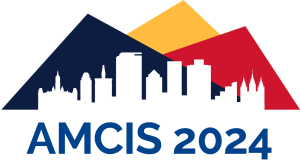Abstract
Election years induce market volatility and firm scrutiny. For example, Congress scrutinized technology firms (Facebook, Google, Twitter, Microsoft), consequently causing the firms to experience high market volatility. Nick Allen, director for Europe and Africa at Control Risks, quoted, “What we have seen is a real shift to national politicians driving the agenda, and businesses have to adjust to that (Turak, N.,2017)”. Environmental uncertainty is a central motivation in the business value of IT (BVIT) (Miller & Shamsie, 1996; Pavlou & El Sawy, 2010). Matthew Goodwin, professor of politics and international relations at the University of Kent, fortified Nick Allen’s sentiments and wrote, “Political Volatility Is Here to Stay (Turak, N.,2017).” Association between political uncertainty and market environmental uncertainty has been recognized (Darby & Roy, 2019), specifically, stock markets counter negatively to firm-level political volatility or risk and affects the firm’s actions on hiring, investment, lobbying-political donations (Hassan et al., 2017). Technology Firms have been subjected to direct criticism from the US president either for political support or view, thus imposing firm-level political risk. Unwarranted political exposure leads to high variation in the market or firms’ market volatility. The mechanism between political exposures, level of market risk, and the subsequent impact on IT strategy can assist CIOs in dedicating resources to manage the firm’s performance. Consequently, it is essential to understand and define the firm-level political risk to decide on an irreversible investment decision to improve the firm’s resource performance. The association between political risk and stock markets negatively affects a firm’s performance. The current work aims to decode the “association between firm-level political risk, IT Investment (ITI), and firm performance. The data for Political Risk (PRisk) ITI and firm performance shall be extracted from the firm-level Political Risk dataset, InformationWeek, COMPUSTAT, and CRSP. The generalized least squares (GLS) regression method will be used with ITI and PRisk as the independent variable and Tobin’s q as the dependent variable. The study conclusion shall help understand how to influence favorable firm performance vis-à-vis the strategic value of IT (resource) and the strategic IT alignment (capability) in the presence of political risk.
Paper Number
tpp1415
Recommended Citation
Agrawal, Rupesh and Paul, Souren, "Corporate Performance and Political Risk: The Role of IT Investment During Election Cycles" (2024). AMCIS 2024 TREOs. 162.
https://aisel.aisnet.org/treos_amcis2024/162
When commenting on articles, please be friendly, welcoming, respectful and abide by the AIS eLibrary Discussion Thread Code of Conduct posted here.


